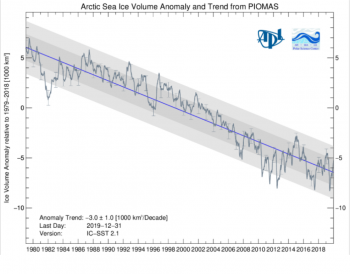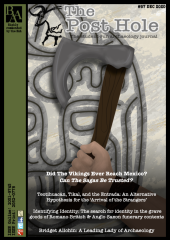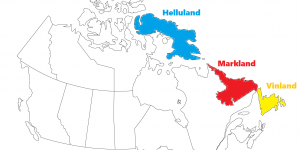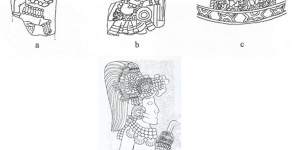Introduction
The concept of sustainability officially appears in academia in the late 1960s due to environmental issues being included in political agendas (Akerman 2003, 431-432). However, depending on contexts or disciplines, the word ‘sustainability’ can have slightly different meanings (Tainter 2006, 92). In this study, it is used as ‘the quality of being able to continue over a period of time' (Cambridge English Dictionary 2020). The sustainability of various elements can be discussed including agriculture, social systems, economy, culture, climate, globalisation, carbon production, population density, or resources management, to name a few. Considering the limited length of this study, only the elements of the environment and human cultures will be considered here as they are closely connected, particularly regarding how human cultures shape land management.
Tainter (2006, 99) stated that ‘Sustainability must be a historical science’. It is often argued by archaeologists and anthropologists among others that looking at the past is essential to understanding sustainability (for instance Mitchell 2008, 1095 and Hardesty 2007, 1-21), which is supported by numerous historical examples. It should be noted that, in the context of Tainter's quote , the word 'historical' should be interpreted as referring to the past in general terms with no specific association with the academic discipline of history.
The first section of this study is focused on why sustainability must be a historical science when studying the environment. The second part will discuss how knowing information about the past provides an understanding of current human cultures, and why that is essential when considering sustainability.
Sustainability and the environment
The concept of sustainability involves the continuity of existing practices, establishing a clear relationship between the past and the present. Additionally, many predictions of the future are currently modelled and discussed. However, as the future is unknown, how can one formulate such predictions? The use of data from the past is essential for this as past events, behaviours or patterns can be identified and applied or adapted to current situations (Stump 2010, 1251).
One of the strongest arguments in favour of considering sustainability as a historical science is the large amount of historical data available. Indeed the collection of live data, thanks to technology, is approximately thirty years old (Steig and Neff 2018, 1). However, some processes, such as glacier formation or melting for instance, can take hundreds or thousands of years to be completed. This supports the fact that live-recorded datasets are not sufficient to provide an adequate understanding of the system; thus they cannot provide reliable predictions for the future. For instance, the rise of sea-levels due to the melting of arctic glaciers and its consequences have been extensively acknowledged by the media in the last few years. Figure 1 represents live data collected between 1979 and 2018. As depicted, this data does not allow the identification of significant patterns that would be sufficient for accurate predictions. Although the rise of sea levels can be observed in the data and the landscape (Figure 1), the understanding of the overall melting rates and causes were only accessible through information from a period of thousands of years.
Figure 2 highlights that, when relying exclusively on recent data, predictions from 1990 did not accurately foresee such an extreme increase of global sea level (Allison et al. 2009, 37).


Indeed, paleo data revealed that the alternation between retreat and expansion of glaciers is part of a process that takes over thousands of years (Figure 3) (Steig and Neff 2018, 3). The major issue presented at the moment is for scientists to determine the "tipping point" i.e. the point after which a return to the original state is no longer possible, of ice sheet melting (Wadhams 2012, 30). This “tipping point” is highly model-dependent (Fisher et al. 2018, 479). Nevertheless, it is only possible to determine by looking at tipping points from glaciers in the past. The variations between models can also be due to other factors that need to be taken into account, such as temperature of the atmosphere or temperature of the oceans.
Secondly, disciplines such as paleoclimatology, archaeology, and palaeontology are also used in order to determine historical environment baselines. Some baselines are defined to allow the comparison between current ecosystems and their past state to assess how much they have changed or degraded (Willis et al. 2005, 108). Others aim to identify the original disruption of the ecosystem. All baselines are identified thanks to scientific methods including ancient DNA analysis, geology, geography, etc. (Hayashida 2005, 46). In terms of sustainability, the first kind of baseline is essential as these comparisons can highlight that a certain system in place is degrading the environment at a rate suggesting that the practice will no longer be sustainable in the near future. This information can consequently be used by programmes such as REDD (Reducing Emissions from Deforestation and forest Degradation) which aims to restore forests to an established baseline where they can be sustainably managed (Ghazoul et al. 2010, 396-397).

Although it seems that environmental baselines are often sought to be set before humans interact with their landscape, Hayashida (2005, 44) noted that humans should not imperatively be defined as a reason for environmental degradation. Nevertheless, similarly to other animals, we interact with, and exploit our environment. Hayashida (2005, 52) gives the example of Southern Sweden where historical and archaeological data suggests that, during the late medieval period, human settlements increased plant and animal diversity as well as the connectivity of the ecosystem i.e. the way different elements of the ecosystem interact with each other. The settlement involved neighbouring infield and outfield areas for agriculture. The details of this case study are fairly limited and the absence of information could suggest that the action of creating a human settlement damaged an ecosystem, decreasing biodiversity, which consequently recovered. Nevertheless, this example has the benefit of demonstrating that humans can interact with their environment without causing serious long-term environmental degradation. This point in time could, hypothetically, be chosen as an adequate historical baseline for ecological restoration for Southern Sweden. Ecological restoration projects aim to identify a historical baseline where an ecosystem was sustainable and modify the current landscape of the area to recreate its state at the time of the baseline. In practice, the realisation is closer to an environmental adaptation than restoration, as the former would imply that all the environmental parameters from the baseline can be replicated today. However, when looking at times like the medieval period for reference, elements like the population density, climate conditions, atmospheric composition, sea levels, biodiversity, etc. will be impossible to restore. However, the parameters can be adapted to recreate a similar result to the baseline used as a reference (Pinnegar and Engelhard 2008, 13).
This study of historical baselines seen through multiple disciplines, such as archaeology and anthropology, can provide insights into how humans from different cultures and geographical areas manage their environment. In some cases, it rejected the Western assumption that indigenous people lived in harmony with nature, thus that their way of life was always environmentally sustainable (Redman 2005, 72). This assumption most likely emerged from the idea that a community that has lived as part of an ecosystem for generations has a deep understanding of it. This is often referred to as "indigenous" or "local" knowledge (Nygren 1999, 270; Maragia 2005, 219). However, this assumption is not always true. For instance, indigenous practices in East Africa, such as the exportation of ivory and rhino horns, have significantly decreased the local biodiversity (Maragia 2005,225; Dalleo 1979, 474).
On the other hand, historical perspectives on land-use experiments have allowed the development of "hybrid" practices that are now more common. They aim to create a sustainable way of living by combining the local knowledge of the area and scientific data (Forsyth 1996, 375). For instance, in Malawi, Dr. Chinkhuntha conducted an experiment associating agricultural knowledge and scientific understanding from Western society with traditional Malawian farming practices (Glasson 2010, 155). The hybrid knowledge allowed Dr. Chinkhuntha to create a balanced ecosystem that limits the number of pests without using chemicals, and prolongs the harvest to three times a year instead of one, which protects his production from most water excess that could otherwise wash it down stream (Glasson 2010, 155).
Although some hybrid projects combine indigenous and western knowledge on a practical execution level, many seem to be focusing on applying western practices while taking into account local culture and spiritual beliefs. For example, in Aotearoa, New Zealand, the Waipa river was negatively affected by human practices (Parsons et al. 2017, 10). In order to resolve this issue, data collection systems on sediments and water quality need to be installed along the river. However, this river, for the local Ngati Maniapoto community, is strongly associated with the local well-being and culture (Parsons et al. 2017, 11). Indeed, in their culture, it is believed that supernatural beings live in the river and ensure the relationship between the people and the water. This example is representative of situations where, without consideration, sustainable land management could disrupt local communities and potentially create conflicts. In light of the necessity for a hybrid approach, the Ngati Maniapoto have been an active part of discussions regarding installations around the river (Parsons et al. 2017, 10-11). In this case, although the environmental challenges encountered would have been interpreted as solely environmental from an outsider’s point of view, the contact with local communities contributed an additional spiritual aspect to the issue. Indeed, while considering the sustainability of an ecosystem it is important to take into account its possible long-term sustainability within local communities.
Sustainability and culture
Studying people in order to predict their behaviour has been researched through a number of academic fields including psychology, philosophy, social sciences, politics, economy, anthropology, archaeology, for instance (Mitchell 2008, 1096). They provide insights into how certain cultures behave in specific situations, which can then be compared to current challenges (Mitchell 2008, 1095). In this essay, the emphasis is placed on the cultural aspect of people's lives. First, the term culture can be defined in many ways: here, it will refer to what separates one human community from another, as defined by Hastrup (1989).
Following this definition, culture is a set of rules and practices that binds the members of a community together. It is part of an individual’s identity and allows them to differentiate themselves from another community (Hofstede and McCrae 2007, 58). This also suggests that individuals grow up within one cultural framework which becomes part of their bias and understanding of the world (Rees 2010, 17). In the previously mentioned example of the river Waipa in New Zealand, the researchers’ cultural backgrounds were significantly different from that of the indigenous people (Parsons et al. 2017, 11). Thus, without the collaborative work between the two sides, the installations that would make the environment more sustainable and might have broken the essential spiritual relationship that the Ngati Maniapoto have with the river. One can hypothesise that this could have led to an abandonment of the river by the Ngati Maniapoto and, consequently without any local management, this could have caused more environmental damage to the freshwater supply. It could also have contributed to the separation of the Ngati Maniapoto from their spiritual beliefs due to western cultural influences (Heyd 1995, 70-71). It is therefore essential to take into consideration the variety of cultural narratives when working on a project similar to this.
At the opposite end of the spectrum, there are multiple cases emerging from colonisation processes where indigenous culture and beliefs were suppressed in favour of imposed western practices. In Australia, indigenous populations had developed an eco-centric organisation of their societies (Dockery 2010, 315). In other terms, their cultural practices were designed for a finite planet (Rees 2010, 21). However, the start of colonisation from 1788 has led to the neglect of indigenous cultures in favour of the adoption of western culture (Dockery 2010, 315). This process was particularly accentuated by the action of taking infants away from their indigenous families to be raised under the influence of western culture; they are now referred to as the "stolen generation" (Dockery 2010, 316). This was the result of the belief that western knowledge was superior to that of the indigenous communities, so that it was deemed necessary, if not a duty, to enlighten local communities (Purcell 1998, 264-265; Nygren 1999, 272). A shift towards empowering indigenous cultures has been seen recently, as evidenced by the previously mentioned example of the management of the Waipa river in New Zealand (Parsons et al. 2017, 10-11). They are now involved in policy discussions and the wider economic system, and attempts are made to preserve their cultures. In spite of this, it is undeniable that original indigenous practices have already been greatly negatively affected by western society, such as in Australia for instance where, according to Dockery (2010, 316), indigenous economic and cultural development has been limited. It should also be acknowledged that in this case, the division has been made between all unique indigenous groups and western society(Dockery 2010). This reveals the limited understanding of indigenous communities by many western individuals and scientists. Indeed, the distinctions made only highlight how local communities are different from western society, and not how they differ from one another.
In order to encourage the discussion between western science and indigenous knowledge, many education programmes have been initiated, such as in Malawi and Ghana. They aim to provide a scientific education to local populations to allow them to create their own hybrid knowledge for a sustainable way of life (Glasson 2010, 157-160; Mueller and Bentley 2009).
Although the term ‘culture’ can bear many interpretations, it often seems that culture is described as permanent; unchanging from one generation to the next (as discussed in Soini and Birkeland 2014). This is not the reality. Indeed, many elements can affect cultural habits including environmental, social and political changes, as well as contact with other cultures. According to Rees (2010), it evolves very rapidly as it is not only transferred from one generation to the next but also across generations, most efficiently through creative change (Choe 2007, 136). Therefore, understanding how society has shaped its cultural heritage, and how and why it has changed, enables us not only to understand the current society, but also to demonstrate that a shift towards a sustainable society, potentially an eco-centric one , is possible.
Conclusion
In the first part of this essay, the emphasis was placed on a solely environmental aspect of sustainability. The example of the study of glaciers highlighted that live-recorded datasets were not sufficient to fully understand long-term mechanisms. The collection of paleodata and the establishment of environmental baselines showed that referring to the past is essential when studying sustainability through hard sciences. Indeed, the understanding of environmental processes, however long they take, relies on the hypothesis that past events will inevitably repeat themselves (Willis et al. 2005, 108). This is also the only possibility scientists have to formulate predictions about the future. Such scientific data and interpretation are of great importance to inform stakeholders, such as politicians, about the gravity of the issues that need to be tackled.
The use of historical baselines to identify the potential sustainability of an area is only possible by looking at the past. Baselines allow the sustainability of the present ecosystem to be assessed through comparison to that of the past. They also represent an opportunity to transform a fast-degrading system into a sustainable one by creating an adapted picture of a past ecosystem.
A major component of most systems that will determine its sustainability is the people that are involved. In this essay, the focus was placed on variations between cultures and their world views. The cultural framework of a community significantly shapes the way its members protect, exploit and manage the environment. Understanding a community’s past provides information on their current way of life, but also on how they are likely to react in the future. Therefore, in order to look at cultures and sustainability, historical information on the community is valuable. Many academic disciplines have been mentioned as ways to collect data on the environment and cultures. It is notable that each discipline is limited in the collection of data and its reliability. This is why interdisciplinary work allows a better understanding of complex situations as it provides information on multiple aspects of the same subject (Mitchell 2008, 1096). It must also be acknowledged that all the examples mentioned in this essay were small scale studies. None of these observations can be extrapolated to larger scales.
Additionally, considering the brevity of this study, only two facets of sustainability were discussed. However, sustainability applies to all aspects of society including agriculture, art and resource management for instance. More importantly, they are all highly related. Indeed, environmental and cultural sustainability are highly dependent on social systems, economy, politics, population density, etc. The complexity of having to address such a large number of connected issues is part of the challenge humanity is facing today.
In conclusion, in order to assess the sustainability of the present and predict the future, it is necessary to study the past on as large a timescale as possible. This is true both for hard and social sciences. Therefore, sustainability is a historical science.








